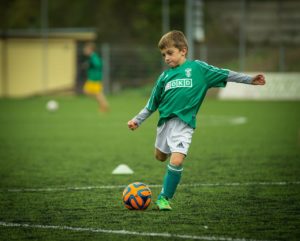For many children, growing up with a beloved pet can provide an unparalleled advantage towards their health and development. First of all, having a pet at home can help teach your child responsibility even at a very young age. You can depend on them to accomplish small tasks like filling up the water bowl or letting the dog out to do their business in the yard, and these simple activities can already make a big difference in the development of their responsibility and maturity.
Furthermore, many families with dogs achieve higher levels of physical activity than those who don’t. That said, having a dog to take care of can help make your child more active, which is especially important amidst the obesity epidemic in the country. And most importantly, a dog can teach your child how to love another living thing apart from their family and themselves; something that is important towards their emotional development.
However, taking care of a small child (or multiple!) can already be a handful. How can you manage to add a dog—who has its own needs—to the mix? Here are a few tips that can help you out.
1. Sign up your pet for dog training
It is not always easy to train a dog, even if you adopt a smart breed. Training a dog often requires a lot of time and patience, especially if you get them as puppies. And if you have small children in the home to take care of, training your new dog may be too much of a handful.
If this is the case for your family, take advantage of private dog training services. Professional dog trainers can train your dog in a matter of weeks rather than months—or sometimes even years—if you do it on your own. After training, your dog will be ready to follow commands and behave themselves at home, which means you won’t have to do much of the heavy lifting.
2. Wait until the right time
Getting a dog when your child is still a newborn may not be a great idea. It is impossible for a dog to be completely silent at all hours of the day, and you don’t need your newborn infant waking up when they don’t need to be up. The same goes if your child is still at that age where you are finding it hard to cope with their demands; you will probably have a hard time adjusting to the additional responsibilities that come with a new pet.
The best time to get a dog is usually around when your child is or older than five to six years old. Any younger than that, and they might find it hard to distinguish the dog between an animal and a toy, which can lead to rough treatment and the animal getting provoked. To keep both your child and pet safe from each other, consider getting a dog when your child is past the age of five or six.
3. Have a separate area for your dog

Dogs are territorial animals. They value their own space and may get agitated when something else (read: your child) invades it. With that in mind, it is imperative that your dog has their own area in the home, be it a small pet nook or a “room” underneath the stairs. You can put their stuff here so that they associate it with their “territory”, and your child should not linger in this area by any means as to not stress the dog out.
4. Educate your child
It is extremely important to teach your child how to handle and take care of a pet properly—both for their own sake and the dog’s. Tell your child to never roughhouse the dog or tease them (e.g. pulling tails, taking away toys, etc.). Moreover, show them proper play so that they don’t mistake aggressive roughhousing as something that the pet enjoys.
Educate them about proper pet care as well. At a certain age, your child should know how to feed the pet (and what not to feed them), put on their leash, feed them treats, and lead them to their crate, among other simple and relatively safe tasks. Doing this will not only teach them responsibility, but it will also help your child bond faster with the new family member.
A dog is always a wonderful addition to the home, just like children are. If you want to introduce a new family member while you have young children in the house, keep these tips in mind in order to make the transition as safe and healthy as possible.



















